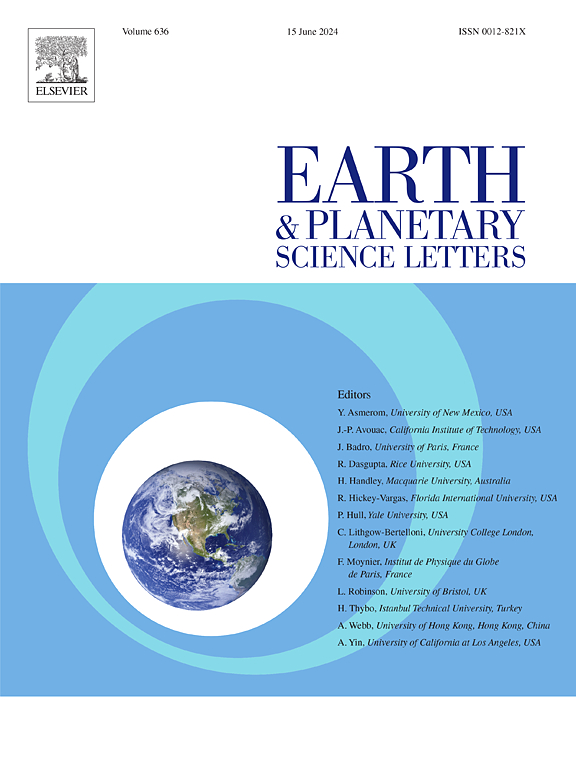Highly oxidized exogenous materials in Chang’e 6 sample returned from the lunar farside South Pole-Aitken basin
IF 4.8
1区 地球科学
Q1 GEOCHEMISTRY & GEOPHYSICS
引用次数: 0
Abstract
Recent discoveries regarding oxidized materials on the moon have challenged the traditional belief that the moon is highly reduced. The oxidized materials occur in either crystalline minerals or glasses, and the complex occurrence makes the origin of these oxidized lunar materials still unclear. Here we report a highly oxidized impact melt clast retrieved by Chang’e 6 mission from the South Pole-Aitken (SPA) basin. The impact melt clast hosts a high content of ferric iron (Fe3+) in matrix pigeonite with an Fe3+/∑Fe ratio of 0.44 ± 0.06, while xenocryst pyroxene only contains ferrous (Fe2+) iron. The observed high Fe3+ content indicates that the oxidation state of the local impact clast is even more oxidized than that of Earth’s mantle. The widespread presence of non-spherical Fe-Ni alloy nanoparticles in the impact melt clast suggests that the oxidized materials may have been delivered to the moon by meteorite. These findings reveal an external source of oxidized materials on the moon, emphasizing the potential role of meteoritic materials in the redox cycling of the lunar surface.
从月球背面南极-艾特肯盆地返回的嫦娥6号样品中的高氧化外源物质
最近关于月球上氧化物质的发现挑战了月球高度还原的传统观念。氧化物质存在于结晶矿物或玻璃中,这种复杂的发生方式使得这些月球氧化物质的起源仍然不清楚。本文报道了由嫦娥六号探测器从南极-艾特肯盆地获取的高度氧化的撞击熔体碎屑。冲击熔体碎屑中基质鸽石中铁(Fe3+)含量较高,Fe3+/∑Fe比值为0.44±0.06,而异晶辉石仅含铁(Fe2+)。观测到的高Fe3+含量表明,局部撞击碎屑的氧化态甚至比地幔的氧化态更严重。在撞击熔体碎屑中广泛存在的非球形铁镍合金纳米颗粒表明,氧化物质可能是由陨石带到月球的。这些发现揭示了月球上氧化物质的外部来源,强调了陨石物质在月球表面氧化还原循环中的潜在作用。
本文章由计算机程序翻译,如有差异,请以英文原文为准。
求助全文
约1分钟内获得全文
求助全文
来源期刊

Earth and Planetary Science Letters
地学-地球化学与地球物理
CiteScore
10.30
自引率
5.70%
发文量
475
审稿时长
2.8 months
期刊介绍:
Earth and Planetary Science Letters (EPSL) is a leading journal for researchers across the entire Earth and planetary sciences community. It publishes concise, exciting, high-impact articles ("Letters") of broad interest. Its focus is on physical and chemical processes, the evolution and general properties of the Earth and planets - from their deep interiors to their atmospheres. EPSL also includes a Frontiers section, featuring invited high-profile synthesis articles by leading experts on timely topics to bring cutting-edge research to the wider community.
 求助内容:
求助内容: 应助结果提醒方式:
应助结果提醒方式:


